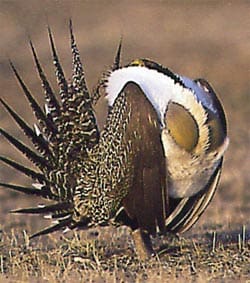 Given all the talk on this blog about monitoring, NFMA diversity, and viability, etc., this recent 9th Circuit Case is another must read (file here: Native ecosystems v_ Tidwell(2)
Given all the talk on this blog about monitoring, NFMA diversity, and viability, etc., this recent 9th Circuit Case is another must read (file here: Native ecosystems v_ Tidwell(2)
I found it particularly interesting in light of the presentations focused on wildlife and monitoring at the planning science forum. See e.g., presentations by Sam Cushman and Kevin McKelvey.
Here is a short summary of the case. And here is a quote from it, sure to rabble the rousers:
“We do not share our dissenting colleague’s perception that the Forest Service can meet its obligations to the environment by naming a virtually non-existent species to serve as a proxy for critical habitat in the targeted area. Far from usurping the agency’s role, our opinion holds the agency to its statutory responsibility to fully study the effects of the planned agency action, and ‘to maintain viable populations of existing species.’ It is unfathomable how the FS could meet its responsibility to maintain existing species by selected as a proxy a species that is virtually non-existent in the targeted area.
I also find the case interesting because it shows an unwillingness of the Court to defer to the USFS on these matters, despite all the ruckus created by Lands Council v. McNair, 2008).
Martin- you were right. This post dragged me from my travel-induced torpor.
Here is what I picked up from a brief review of the decision:
The area has been grazed for over 100 years. What’s on the table is no grazing, the current situation, and an alternative with extra riparian protection in the new allotment management plan.
What’s keeping that from happening (a lower impact alternative) is a lawsuit. There seems to be sagebrush and potential habitat for sage grouse, but no sage grouse. So they couldn’t monitor them.
How can you monitor something that’s not there? Why would you try to monitor something that isn’t there? How can reducing the intensity of a practice that has been going on for 100 years have an effect on something that’s not there?
If there is no viable population in the study area, how can the forest “maintain” it?
It’s all very puzzling to me- hopefully someone can explain.
It might be more direct to target a number of acres inhabited across the landscape, and to monitor and change practices if it gets below a certain percentage. Then the courts could just see whether the monitoring had been accomplished as planned, and whether if the numbers fell below the target, the FS and collaborators were arbitrary and capricious about deciding what to do next.
Indeed, what do you monitor? Obviously you can’t monitor grouse if they aren’t there and as the Science Forum suggested (and the Court in this case) habitat is not an effective surrogate. Nor other species, I presume. You can look at presence and absence elsewhere to get at range expansion/contraction (again as the Science Forum suggested) but that doesn’t get at the effect of practices in the study area. So I’m left thinking that given a complete absence of the species, then a habitat or species surrogate, even given their limitations, is the still next best option.?.
Well, I probably should not weigh in until I get more facts about the case, but some very tentative questions that seem relevant and that I’ll pursue at some point.
First, I’d be curious to know more about population numbers when sage grouse were chosen as the MIS (in the 86 forest plan I believe). If the numbers did indeed fall dramatically over the years, isn’t this important to consider? And if true, shouldn’t that be considered by the agency, or even control the agency, when it makes related grazing decisions? (Recall, for example, the common refrain that NFMA demands the USFS to treat the “wildlife resource as a controlling, co-equal factor in forest management.”)
And what if the Court permitted the continued use of non-existent populations as a legitimate implementation of viability/proxy-by-proxy? Wouldn’t that render the whole mandate meaningless?
Also curious of how this case might inform the new planning rule. If the proxy-by-proxy approach is fatally flawed, as many suggest, then what type of regulatory language might take its place? What would such monitoring language look like?
At the risk of defending a 2-1 decision that may be headed for en banc review, I suggest that the court continues to be quite generous to the Forest Service in regard to the NFMA viability rule. This decision up-holds the use of habitat monitoring as a proxy for population monitoring.
What the court emphasizes, however, is that the underlying purpose of the management indicator species approach is to protect “other sagebrush obligates,” i.e., the other species that rely upon the same kind of habitat used by the sage grouse. That function cannot be fulfilled when there is no linkage between sage grouse populations and sagebrush habitat. The court explains: “the proxy-on-proxy approach was unreliable in ensuring overall diversity in this case.”
In sum, the court was offended that the Forest Service appeared to close its eyes to the extirpation of sage grouse from 48,000 acres of national forest and failed to demonstrate that other species that rely upon sagebrush habitat would be protected. This decision makes no new precedent.
And, one question that has been bugging me ever since I worked on the Bitterroot. When does “Potential Northern Lynx Habitat” become NOT protected? When EVERY single tree is dead?!?!? It was designated as all lands above a certain elevation, and in 2003, mortality was about 60%. I’d be willing to bet that those lands are now targetted as “wildlife corridors”, despite not being suitable for most threatened species.